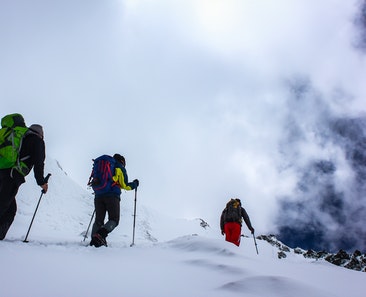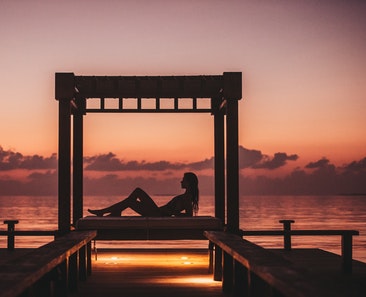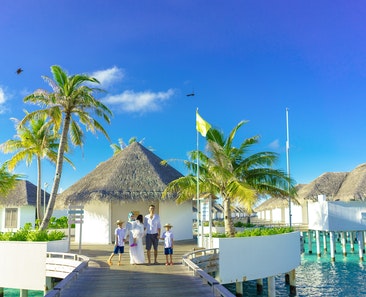Climbing Mount Kilimanjaro in Africa – A Comprehensive Guide
Every traveller wants to discover new places and explore more destinations but the ultimate challenge is to embark on a new adventure, scale new heights and push one’s boundaries. And scaling the formidable Mt Kilimanjaro, the Roof of Africa which towers over 19,341 feet (5895 metres) is more than just a bucket list experience. For many the iconic mountain located in Tanzania in Africa is beyond a daunting adventure or an expedition and a personal goal that transcends all journeys. There is more to it than just the summit. Rising dramatically from the African savanna, Kilimanjaro’s snow-capped summit dwarfs everything in sight and is a symbol of incredible natural wonder. The diverse ecosystems, the terrains, the unique landscapes, and the challenging routes add to the magical allure of the mountain, which was once referred to as “Kilema Kyaro,” which means “impossible to conquer” in the Kikuyu language. The Maasai people revered the powerful Ngaie spirit who they believe lives on the Uhuru summit and protects those who respect the mountain. While these legends only add to the mysticism, Mt Kilimanjaro, the largest free-standing mountain in the world is a dormant volcano with three cones – Kibo, Mawenzi, and Shira which has a rich biodiversity. Here is a comprehensive Climbing Mount Kilimanjaro Travel Guide that we have compiled for you that will inspire you to climb Africa’s highest peak and take you on an awe-inspiring journey. More than 40000 people climb the mountain every year and you can go on this African Safari as well and begin your Seven Summits journey with Mount Kilimanjaro.
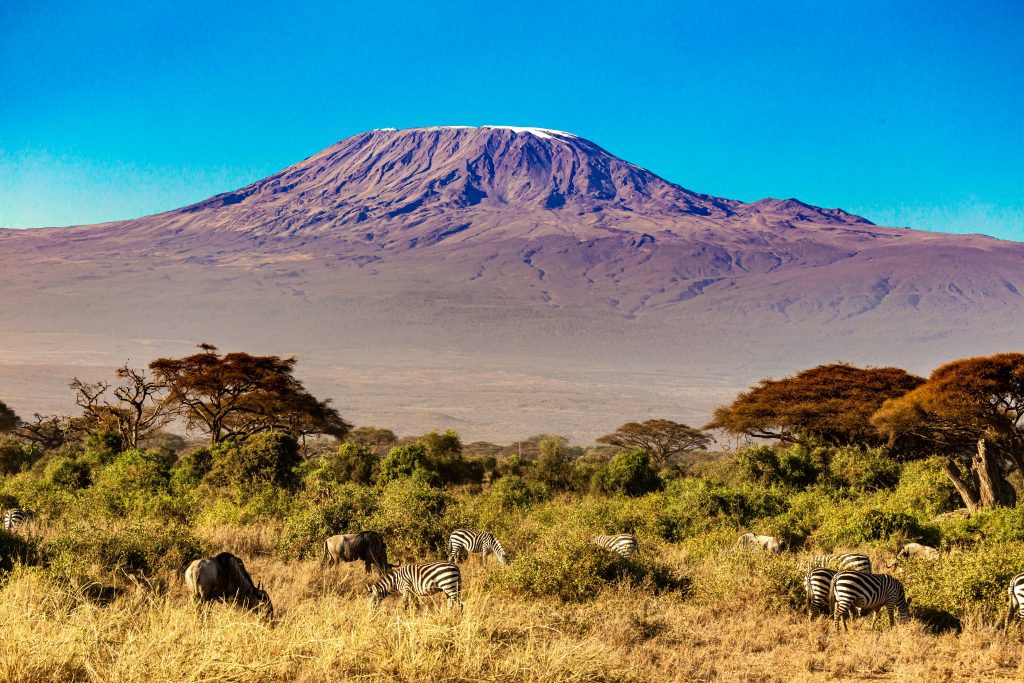
Photo by Stephan Bechert on Unsplash
Where is Mount Kilimanjaro Located?
Mount Kilimanjaro is situated in northeastern Tanzania, near the border with Kenya. Its majestic peak rises above the surrounding plains, commanding the attention of all who behold it. The nearest major city to Kilimanjaro is Arusha, a popular starting point for many Kilimanjaro treks.
How to Get There
The most common way to reach Kilimanjaro is by flying into Kilimanjaro International Airport (JRO), located approximately 46 kilometers (29 miles) from Arusha. Several international airlines offer direct flights to Kilimanjaro Airport from major cities in Europe, the Middle East, and other parts of Africa. Upon arrival, you can arrange transportation to your accommodation in Arusha, where your Kilimanjaro adventure will begin.
When is the Best Time to Climb
Late December to early March and mid-June to late October are the best times for a Kilimanjaro climb. This is when the Kilimanjaro weather is nearly ideal. Seven days is the ideal duration of the expedition.
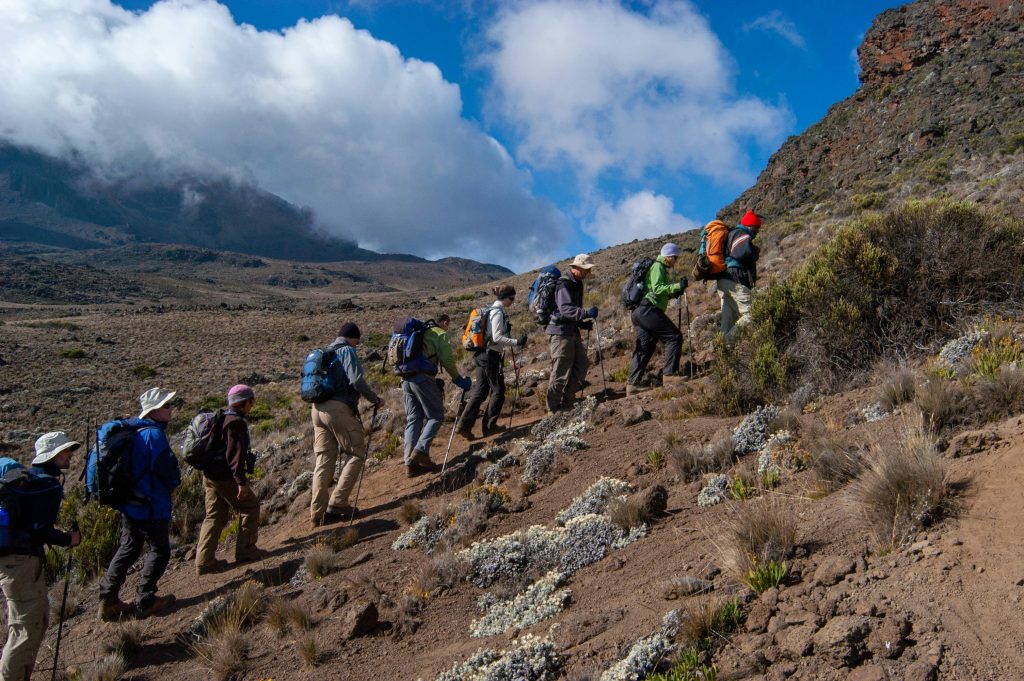
Photo by Crispin Jones on Unsplash
Choosing Your Route
There are four popular routes and you can make a decision based on the duration, the difficulty, the terrain, and most importantly – your fitness level and of course altitude acclimatization.
Climate Zones
There are five distinct climate zones – Cultivated, Rainforest, Moorland, Alpine and Arctic. There are diverse landscapes here ranging from rainforests to alpine deserts to moonscapes. Prepare to be swept away by the verdant and unique biodiversity here, with unique flora and fauna. At the foothills are the lush fields where you can see local communities growing coffee, bananas, and other crops. But as you start your ascent, the montane rainforests surround you as you see ancient towering trees and endemic birds give you company. There are moorlands and alpine deserts and barren lunarscapes but as you climb higher, you realize you are in a different realm of glaciers that take your breath away.
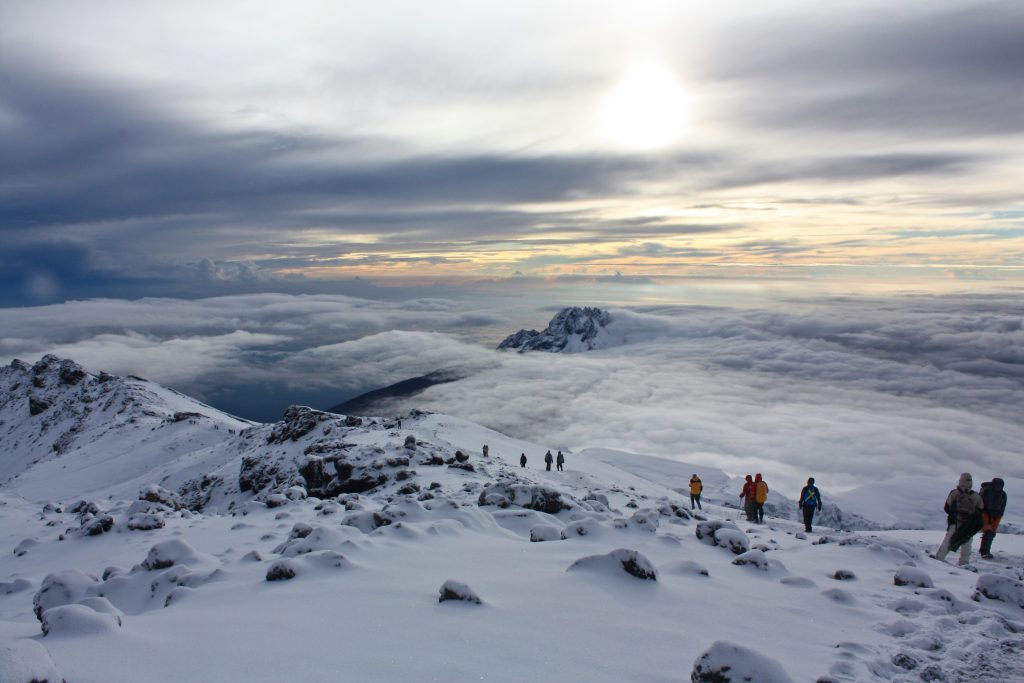
Photo by Kristoffer Darj on Unsplash
Popular Routes on Kilimanjaro
Marangu Route – It is one of the oldest routes along the Eastern slope of Kilimanjaro. and it is familiar to both professionals and a favourite with beginners as it is comfortable with accommodation options as well. It was nicknamed the Coco Cola Route because of its availability at the Maranga Hotel, the very first hotel on this route. More hotels with facilities came up at the base eventually and trekkers can even sleep in comfortable shared wooden huts than just tents. Its the only route that is used for both ascent and descent.
Machame Route: The Machame Route, also known as the “Whiskey Route,” doesn’t offer whiskey on the route but is believed to give a sense of high with its beautiful scenic vistas of rainforests, heathlands, and alpine deserts before reaching the summit. It is also preferred by experienced trekkers seeking adventure and is believed to be more challenging. It starts in the tropical rainforest on the southern slope. Beginners should choose the seven-day option for a better acclimatization profile
Lemosho Route: The Lemosho Route is considered one of the most beautiful routes on Kilimanjaro, offering panoramic views and is less crowded than the others. It also has a longer route and more scenic
Rongai Route: Rongai is a less-traveled route that offers a tranquil wilderness experience and its more towards the northern side of the mountain, close to the Kenyan border.
Umbwe Route – The Umbwe Route is more challenging and it follows a steeper trail in the beginning. It passes through a beautiful rainforest. You can see colobuses and blue monkeys there.
Booking Your Expedition
When booking a Kilimanjaro expedition, it’s essential to choose a reputable tour operator with experienced guides, a strong safety record, and a commitment to sustainable tourism practices. Here are some reliable tour operators to consider:
Altezza Travel ranked #1 and highly on Tripadvisor provides personalized Kilimanjaro expeditions tailored to meet the needs and preferences of individual trekkers. Their knowledgeable and experienced guides ensure a safe and enjoyable experience for all participants. You can climb Mt Kilimanjaro, go on a wildlife safari, and enjoy a beach vacation on the paradise island Zanzibar. Their operations are located straight on the slopes of Mt Kilimanjaro in Machame area, near Moshi town, and they are experts in hiking and Afrincan safari adventures. They also have group tours every 2-3 days a week. Each expedition is supplied with unlimited bottled oxygen to make acclimatization less stressful.
The team members are avid travellers themselves and their wildlife guides are certified and well-trained professionals who have worked in all the National Parks in Tanzania. They also own two large hotels, a safari fleet, and high-quality equipment that also meets safety standards.
Other tour companies include Wilderness Travel, Thomson Safaris, and Zara Tours.
How Much Does it Cost?
The cost of a Kilimanjaro expedition typically ranges from $2,000 to $2,300 per person, depending on various factors such as the route chosen, the duration of the trek, the level of service provided, and the tour operator selected. This cost usually includes park fees, guide and porter services, accommodation, and meals during the trek, as well as airport transfers.
Planning Your Expedition
Most travellers and climbers plan well in advance, focussing on their fitness and training and their physical and mental health before planning the expedition. Train regularly to improve your cardiovascular fitness, muscle strength, and endurance. Pack appropriate clothing and gear for varying weather conditions, including warm layers for cold temperatures and rain gear for wet conditions. Familiarize yourself with the symptoms of altitude sickness and take necessary precautions to minimize the risk of altitude-related illnesses. Carry medicines and get your health and fitness vetted by a doctor before embarking on the journey. A positive attitude is an absolute must.
The journey is the destination here as it’s an adventure of a lifetime, filled with challenges and unforgettable moments. Embrace the journey, and immerse yourself in the beauty of the mountain.
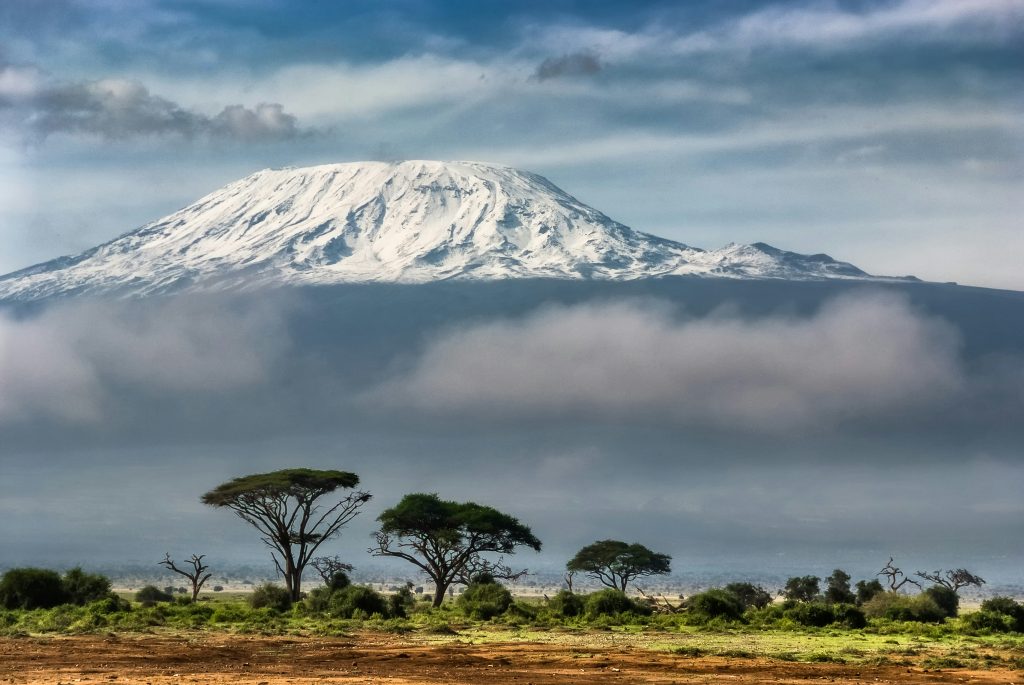
Photo by Sergey Pesterev on Unsplash
Experiencing Kilimanjaro
Summiting Uhuru Peak
There is nothing more exhilarating than scaling the majestic Uhuru Peak, which is the highest peak in Africa. The profound feeling is inexplicable as its the ultimate goal of the expedition. Towering at 5,895 meters (19,341 feet) Uhuru means Freedom and it is located on the summit crater of Kibo, the highest volcanic cone of the mountain. The name, Uhiru is a tribute to commemorate Tanzania’s independence from British colonial rule. One of the most magical moments is watching dawn break from the peak and it is more than just a breathtaking spectacle. It’s a priceless personal moment – one that is treasured
The post Climbing Mount Kilimanjaro in Africa – A Comprehensive Guide appeared first on Lakshmi Sharath.

